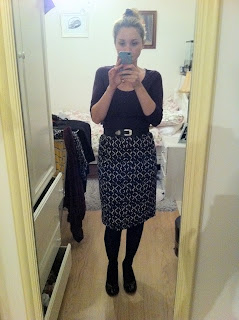Knitted scarf
Cushion covers
Toy bags
Dribble bibs for baby Leighton
Lavender cushions
Skirts
(Modelled by the lovely Lynsey)
Dresses
Patchwork quilts
I'm still new to patchwork and experimenting with different techniques and finishing methods, but for this one I chose to hand sew it. Patchwork can be much quicker by machine stitching, but it's all preference really. Hand sewing was quite therapeutic, but after this first pattern I have made quilts by machine, I find it's much quicker and can be a little more forgiving if your patches aren't quite as presicely shaped.
Step 1 - I ordered hexagon templates over the internet from www.patchworktemplates.com. I did try drawing and cutting my templates by hand first of all, but this didn't work so well. When I tried fit the pieces together I had different sizes, so as you can imagine I swiftly rejected that idea. Paper templates are great and ensured sizing was equal (hurray!). The service Jackie provided was also fantastic, and came with a template planner and step by step insturctions. I ordered the largest hexagon shape possible, I think this was 10cm x 10cm.
Step 2 - Choose your fabric and cut square pieces of fabric a few millimeteres larger than your hexagon. Then wrap your fabric around your template and hand sew it in place.
Step 3 - Keep making pieces until you have the desired size of blanket you want. Find a large space and arrange your pieces in the pattern you like.
Step 4 - With right sides together hand stitch each hexagon togther. Avoid the temptation to remove papers until your work is complete, then cut your wadding and bind the edge of your quilt.
This was a more of a whistle stop tour of patchwork, so I will write a complete blog for my next quilt soon.





























